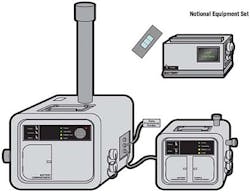Army to issue RFP in December for Joint Biological Tactical Detection System (JBTDS)
Officials of the Army Contracting Center, Natick Contracting Division in Natick, Mass. have issued a presolicitation (W911QY13R0036) for the Joint Biological Tactical Detection System (JBTDS) to alert deployed warfighters to the presence of biological weapons that could kill or disable those in the immediate area.
The JBTDS biological detector and collector sub-system will provide visual, audible, and networked warnings of the presence of biological agents and trigger sample collection. The JBTDS identifier will identify the presence of biological agents and identify target species.
The Army, on behalf of the Joint Project Manager - Nuclear Biological Chemical Contamination Avoidance (JPM-NBCCA), will ask industry to design biological weapons detection, collection, and identification hardware and software linked together through a base communication system for real time detection.
The project will involve designing the detector and collector, identifier, and base station communications, which will function independently or together as one system. A combination cost plus incentive fee, firm fixed price, and cost type contract should be awarded to one or several contractor.
The request for proposal (RFP) for JBTDS is expected to be issued on or about 6 Dec 2013. The RFP will be posted online at the Army Contracting Center Website at https://www3.natick.army.mil.
For questions or concerns contact the Army's Richard Totten by phone at 301-619-2446, or by email at [email protected].
More information is online at https://www.fbo.gov/notices/fd6b0b21476a8bd8ec6d286e31c86aec.

